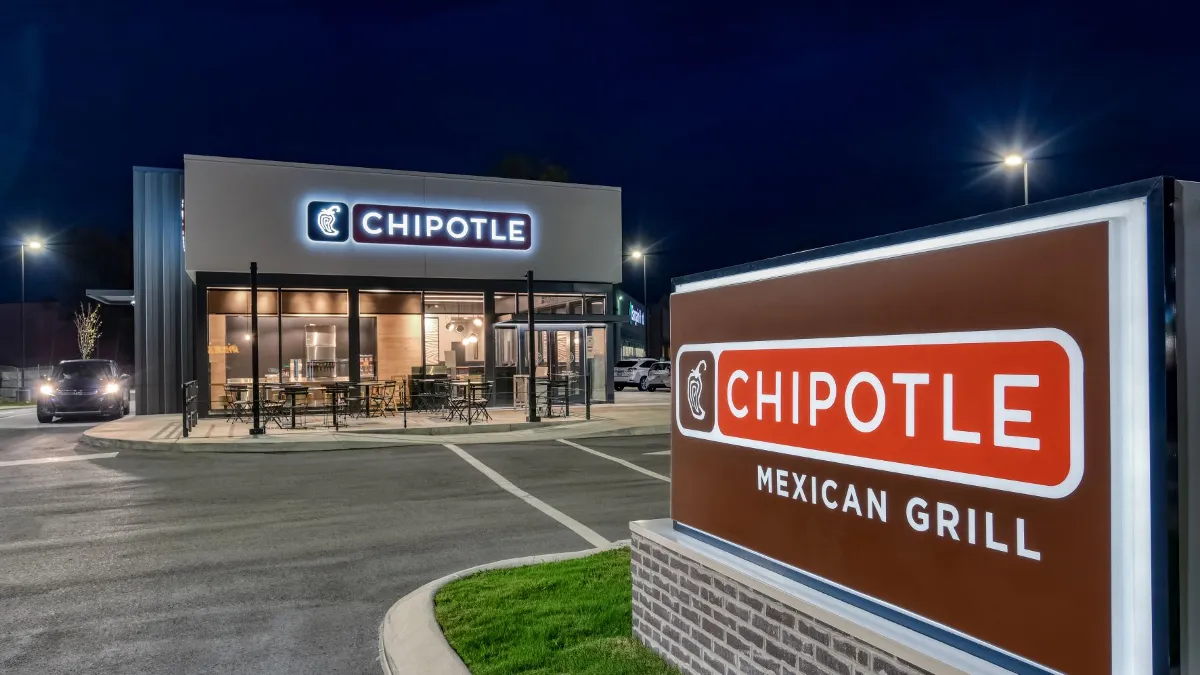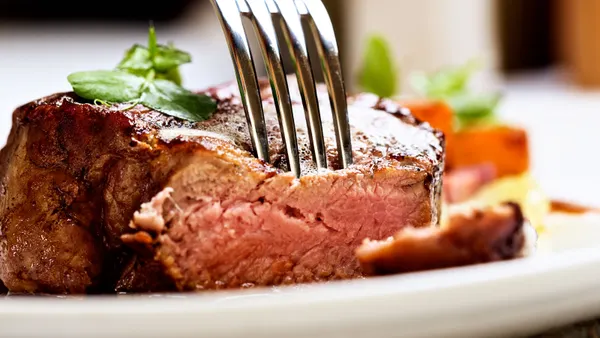Dive Brief:
- Chipotle’s dine-in sales increased 22.1% year-over-year during Q3 2022, according to the company’s earnings release. Comparatively, dine-in sales rose 35.9% during Q2 2022.
- Sales reached $2.2 billion, driven by a 7.6% comparable sales increase over Q3 2021, CEO Brian Niccol said during Chipotle’s earnings call. Between Q2 and Q3, 2022 sales remained essentially flat.
- Year-over-year sales growth continued to grow despite a reduction in frequency by low-income consumers. A majority of Chipotle’s customers come from high-income households, which have increased frequency, Niccol said.
Dive Insight:
Chipotle has met minimal resistance to pricing increases, Niccol said on the call. The company increased menu pricing by 4% in August and 10% during 2021. Chipotle also made additional price hikes between 2% and 3% in 700 restaurants where wages were growing faster than other parts of the country, CFO Jack Hartung said during the call. This additional pricing will lead to a 14.5% or 15% cumulative price increase by the end of the year, which will drop down to 11% in the first quarter of 2023.
“In all this inflationary environment, everybody is taking price,” Niccol said. “So our costs, I think, are up over 20% over the last two years. Not surprising, other people are experiencing something similar and they've taken pricing accordingly.”
Still, BTIG found that Chipotle remains relatively cheap compared to its fast casual rivals Qdoba and Moe’s Southwest Grill. Niccol said that about half of purchases are made up of a chicken burrito or a bowl, which is less than $9 in its restaurants. Compared to its fast casual competitors, Chipotle’s menu prices range anywhere from 10% to 30% lower, Niccol said.
“This is a tremendous value when you consider the quality of our food, including our food with integrity standards, the fresh preparation utilizing classic cooking techniques, the customization, generous portions and of course, the convenience and speed,” Niccol said.
Dine-in traffic has largely rebounded even as digital sales growth has slowed. During the early quarters of the pandemic, digital sales made up about half of Chipotle’s sales, but now make up 37.2% of food and beverage revenue. However, transactions are down 1%, which is in line with overall industry trends.
Consumer behavior is changing, too, as diners return to “normal course behavior,” CFO Jack Hartung said. Instead of working from home and getting meals for the whole family, diners are eating more on an individual basis or paying for an individual meal when out with a group, he said. That has meant restaurants are selling fewer burritos per transaction, but are seeing a positive impact on traffic, he said.
Chipotle’s foot traffic was up 23% year-over-year by the end of Q3 2022, according to Gravy Analytics data emailed to Restaurant Dive. Fast food restaurants didn’t fare as well, with foot traffic for McDonald’s increasing only 3% year-over-year. Burger King and Wendy’s traffic declined 5% and 3%, respectively, year over year.
“One of the biggest takeaways our data reveals is that U.S. consumers have fast food and drive-through fatigue, but they are ready to sit down to dine,” Jolene Wiggins, CMO of Gravy Analytics, said in an email to Restaurant Dive. “In terms of foot traffic, fast casual restaurants, like Chipotle, have picked up considerably year-over-year, while visits to fast-food establishments, including McDonald’s, have remained more or less flat compared to the third quarter of last year.”










